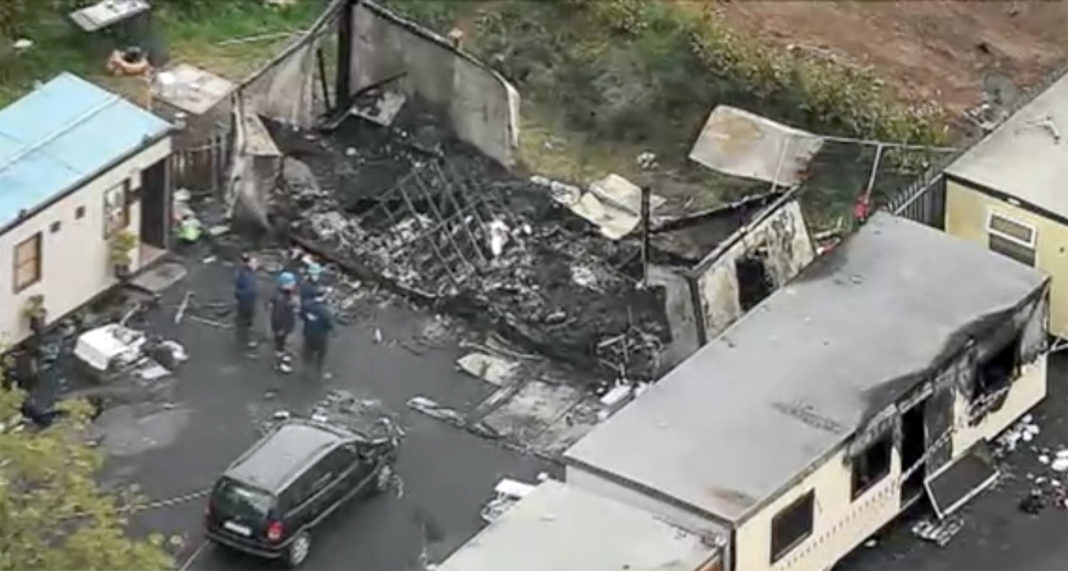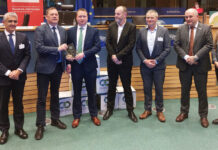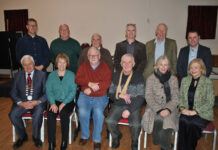In 2015, a fire tore through a temporary halting site in Carrickmines, Co Dublin, killing five adults, five children, and an unborn baby. Five years on, Martin Collins of Pavee Point says little has improved for Ireland’s Traveller community.
It was an unspeakable tragedy, and the then Taoiseach, Enda Kenny, decreed that the national flag should be flown at half-mast. Books of condolence were opened all across the land, and President Michael D Higgins and his wife Sabina passed a long queue to sign a book at Dublin’s Mansion House.
Prayer vigils were held, and people travelled from near and far to attend the funerals. Pope Francis sent a beautiful letter and offered his prayers.
Just over five years ago, on the night of Saturday, October 10, 2015, a catastrophic fire on a temporary halting site in Carrickmines, Co Dublin, killed five adults, five children, and an unborn baby. It was Ireland’s worst such disaster since the Stardust fire, and it highlighted the appalling conditions in which many Traveller families live.
Days after the fire, residents of the nearby Rockville Drive blockaded the proposed site of a temporary, emergency halting site for the survivors of the fire. An Irish Times online poll of 4,800 readers saw 78% say the residents were right to protest.
At the time, Martin Collins, co-founder of Pavee Point, told me the reaction to the Carrickmines fire had horrified him.
“I have never witnessed such depths of hostility and hate towards my community as I have on this occasion,” he said.
I spoke with Martin Collins on Monday, and he says the high-blown rhetoric in the wake of the fire, which suggested Carrickmines would be a watershed for Ireland, a line in the sand, proved short-lived.
“Within a week of the tragedy, it went from bouquets to boulders. It was beyond despicable. It was blatant, scraping-the-barrel racism.”
Mr Collins believes we could have another tragedy like Carrickmines today.
“Many Traveller sites across the country are really not fit for human habitation, and don’t even meet basic health and safety or fire standards, so absolutely there is another Carrickmines in the offing.”
On the night of Wednesday, March 1, 2017, there was sustained applause and a standing ovation in the Dáil chamber as then Taoiseach Enda Kenny announced the formal recognition of Travellers as a distinct ethnic group within our State.
“Our Traveller community is an integral part of our society for over a millennium, with their own distinct identity – a people within our people,” Mr Kenny said.
“We recognise the inequalities and discrimination that the Traveller community faces.”
During the 2018 presidential election, Dragons’ Den celebrity Peter Casey denied Traveller ethnicity, describing Travellers as “basically people camping in someone else’s land” who are “not paying their fair share of taxes in society”. Casey also took a cut off of asylum seekers living in abject misery in our inhumane direct provision system.
Peter Casey was rewarded for what then Tánaiste Simon Coveney condemned as “lowest common denominator politics”, going from last place in opinion polls to finishing second only to the incumbent Michael D Higgins, securing 342,727 votes, or 23.3% of the final tally.
Martin Collins says Casey’s electoral bounce for his “Trumpian rhetoric” is a cause for concern, but he takes great heart from President Higgins’ thumping victory.
“It was a resounding vote from the public for inclusion, for respect, and for equality, and it’s important we remember that. It was a resounding mandate for Michael D Higgins and the values that he represents around human rights and dignity and decency.”
Traveller children have an infant mortality rate four times that of the general population. Life expectancy for a male Traveller is 61.7 years, 15.1 years less than other Irishmen. Female Traveller life expectancy is 70.1, 11.5 years less than other Irishwomen.
Suicide rates are six times that of the wider community, accounting for one in eleven Traveller deaths.
According to Central Statistics Office figures released in February of this year, only 13% of Irish Traveller children complete second level education, compared to 69% of the general population, with over half of the number of Traveller children who drop out of second level education doing so by the age of 15.
Ireland has one of the highest levels of third level education attendance in the world, with almost half of the Irish population (48%) going on to attend college. Shockingly, only 1% of Travellers go on to third level education.
The survivors of the Carrickmines fire were initially re-housed in a car park beside a local dump, but are now living on the original site, in more permanent accommodation. Last week, local advocates told RTÉ’s Barry Lenihan that the Carrickmines residents face immediate housing concerns which need to be addressed to prevent further overcrowding on the site.

Today, more than 2,000 Traveller families across Ireland – including 3,000 children – live in conditions as appalling as those which led to the Carrickmines tragedy, with some sites unsafe, overcrowded, rat-infested, lacking water or electricity, and prone to fire hazards.
Martin Collins points out that other Traveller families are doubling up with family members because they have nowhere else to go.
“That equates to about 6,000 people. Travellers make up less than half of 1% of the total population, yet we constitute 15% of the homeless population.”
According to recent Government data, some 591 Traveller families are living on unauthorised halting sites, either on private lands or on the side of the road. Approximately 40% of those sites have no sanitisation or running water.
To date this year, local authorities have drawn down less than half of State funding allocated for Traveller accommodation. Since the year 2000, local authorities have failed to draw down a staggering €69 million in funding ring-fenced for Traveller accommodation.
According to figures supplied to Sinn Féin housing spokesperson Eoin Ó Broin TD, only €6.56 million of €14.5 million allocated has been drawn down this year, with nine of the 31 local authorities yet to draw down any funding at all. Those authorities are: Cork County, South Dublin, Longford, Louth, Mayo, Meath, Westmeath, Wexford, and Wicklow.
“It’s absolutely shameful, and this has been a consistent feature going back over 20 years,” Mr Collins says. “It’s absolutely despicable. We need a completely different approach to Traveller accommodation, and to be perfectly honest with you, this power needs to be taken away from local authorities.
“They are just inherently unwilling, or incapable, or both, to meet the accommodation needs of Travellers. They have failed miserably and consistently over 20 years, so it’s time now to take that power away from them, and to give it to a centralised, independent body, that would be given the necessary legislative framework and resources to do the bloody job.”
I asked Martin Collins whether he would agree that hatred of Travellers is Ireland’s last acceptable racism.
“Hatred of Travellers is the last bastion of racism in Irish society, and that racism is so embedded in the Irish psyche, and our institutions and structures, that it has become so normalised in public discourse that it is possible to express anti-Traveller racism and no-one seems to blink an eyelid.”
I asked what he thinks we can all do, as Irish citizens, Traveller and settled alike, to address Ireland’s ingrained anti-Traveller racism.
“Everyone has a role to play. Even though we Travellers are victims of racism, it’s not just our responsibility to address racism. Every institution has a role to play. Citizens, politicians, the trade union movement, the church, the media, all of us; racism is not just a problem for Travellers to resolve. “
When it comes to tackling racism, Martin Collins says, “We all have a contribution to make.”








